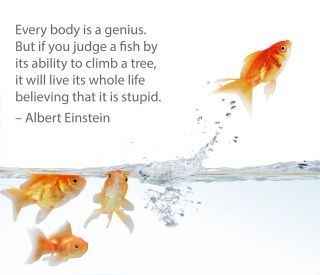
Personality
From Arrogance to Appreciation
Navigating the journey of life with the compass of character
Posted May 5, 2015

How do we learn to navigate this journey called life? It is full of twists and turns, ups and downs, joy and anguish, clarity and confusion, love and hate. We rely on two basic processes. First, we learn “best practices” by observing others. We observe them directly and through the stories they tell us in lectures, books and movies. Second, we have our personal experience that teaches us what works better and worse.
As new information presents itself our minds have a function like a train track switcher. The new information is either sent down a rail to an existing concept we have already formed and it is incorporated into it. For example, following a car accident, the mind might send this information down a track that leads to an existing concept of “I am so unlucky.” Or, it might switch the track and send it down a path to develop a new construct of “Under certain weather conditions black ice forms and I need to be very cautious.” The former is called “assimilation” and the latter “accommodation.” Humans differ in how much our minds assimilate versus accommodate.
Einstein’s quote reflects this tension. As we judge others we tend to process our observations mainly in terms of our existing constructs of “how to be.” If we have learned that climbing a tree is essential to surviving and thriving, then we will judge a fish as ill-equipped. But, if we allow our minds to add complexity we understand that for creatures living in the water other traits matter most.
In the past 15 years, the VIA Institute on Character has had a mission to advance the science and practice of character strengths. We have learned that all humans possess 24 character strengths – elements of our personality that benefit us as individuals while not diminishing others. They are a source of our “win-wins” in life. And, the key here is that we each have a unique character profile of these 24 character strengths. Like facial features, we all share the same ones in common, but how they are arranged relative to one another gives us each a unique look.
And, so it is with character strengths. Each of us is good in different ways. If we judge others’ character only in terms of our own, we will make the error that Einstein refers to in the quote above. Alternatively we can switch the track in our mind to consider that the person we are observing has a different set of prominent “goodnesses” than our own, and that their character strengths are ones that help them be at their best. For example, my tendency to be creative, and bold, and aggressive in getting things done may run counter to another person’s prudence and methodical planning. If I judge the other based on my personal preference they will always fall short. But, if I realize there are many ways to be and to get things done, I can embrace a different approach.
As we go through life, you can practice “accommodating” the truth that while people come in all shapes and sizes, they also come in all forms of character strength profiles. We each develop our profiles based on genetic predispositions and what we learn works well for us. When we observe someone and have the initial judgment of “that’s not what I would have done,” consider that their choice may have derived from their own set of values and positive character traits.
The VIA Classification of Character Strengths and Virtues is a beautiful set of lenses through which to view ourselves and others. Try them.
Resources:
Learn more about the work of the VIA Institute, click here
Learn your top character strengths by taking the VIA Survey

